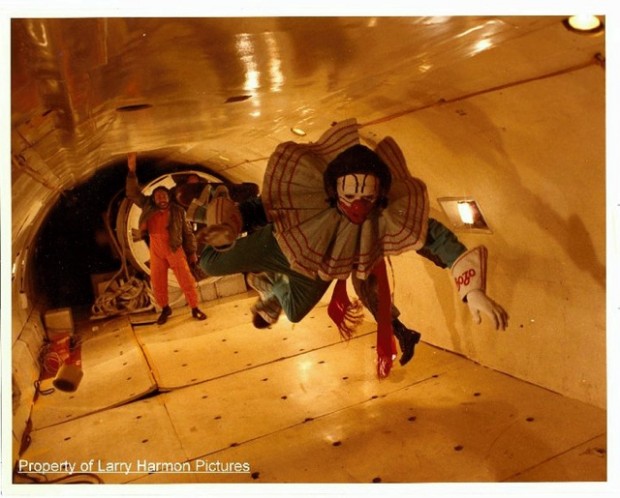
In our childhood years, long before we ever put our hands on CPUs, cell phones, or e-book readers, there were toys and household items that served as the foundation for our future geek obsessions. Maybe you were fascinated by the cockpit of your X-Wing fighter as a child. Maybe you scribbled detailed blueprints for Spiderman’s web shooters during your math class. Maybe you took a wooden kitchen spoon and imagined it was a wizard’s wand.
Whatever the manifestation, the fact is that as a child, some simple item stoked your imagination. And a thirst for details, for understanding how things work, for increasing capabilities and limits. Which led you here to CrunchGear all these years later, to while away the hours debating processing speeds and hard drive storage.
I was reminded of this phenomenon recently when I read The Man Behind the Nose: Assassins, Astronauts, Cannibals, and Other Stupendous Tales by Larry Harmon with our own Thomas Scott McKenzie. You might recognize McKenzie’s name from his occasional posts on musical equipment for CrunchGear.
Larry Harmon was the man who popularized the Bozo the Clown character for more than fifty years. In his book, available now from the Igniter Literary Group imprint of HarperCollins, there is a section from his life in the 1920’s and 1930’s that illustrates just how childhood fascinations and simply household items as toys can follow us throughout our lives. Here is the excerpt:
From The Man Behind the Nose: Assassins, Astronauts, Cannibals, and Other Stupendous Tales:
As celestial bodies move through the solar system, there’s a pattern of appearing, disappearing, and reappearing. We see the sun, our sky goes dark, and then the sun rises again in the morning. Halley’s Comet makes an appearance, moves on, and then blazes through our heavens seventy-five years later.
Those objects don’t cease to exist when we can’t see them. They’re still out there and they reappear in our lives like a recurring motif in an opera.
Besides music, one of the other major threads of my life was the idea of space—of this vast galaxy and the infinite black above us. It occupied my imagination as a young child, served as the basis of one of my first jobs in Hollywood, and later urged me to train with astronauts and experience zero gravity.
When I was five years old, my parents purchased a refrigerator from the Sears Roebuck catalog. After the applicance was installed, my mom beamed at the gleaming addition to her kitchen. My father returned to the Cleveland Indians game on the radio. And I investigated the empty shipping box in the backyard.
That box became my pirate ship, my tank, my stagecoach, my castle, my tunnel, my mountainside. I would lug the box upstairs in our house, climb in, and slide down the stairs like a runaway train. Anything a little boy could envision, that box could accommodate. But its most frequent incarnation was as a flying vessel. Sometimes a plane, like the one in which I imagined Lindbergh crossed the Atlantic. Other times, the box became a flying saucer, capable of propelling me into the heavens like the brave souls in Jules Verne’s sciene-fiction stories. I felt the urge to fly, to travel at high speeds, to leave a mark in the sky that people would see.
Over the years, the box started to wear down. My friends moved on to other games. But I still spent hours with it in the backyard, with imaginary robots, as I frequently worked the controls, struggling to hold the rudder straight while buffeted by the force of winds and weather as I yearned to break free of gravity, imagining myself in space.
Just as I reached the age where it no longer seemed right to play in a box in the backyard, it fell apart, finally sucumbing to weather and abuse, the few remaining nails rusted and stripped and useless. My father threw the remnants in the garbage.
But the fascination with space and air travel never left me.
For more information about this book and Bozo the Clown, join the Facebook fan page